Spring Flowers: [List, Care and Meaning]
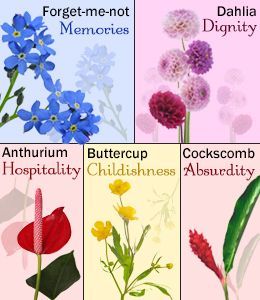
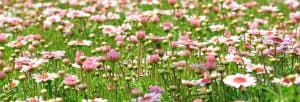 Spring flowers are the most abundant in the world. At this time they get the conditions that most like.
Spring flowers are the most abundant in the world. At this time they get the conditions that most like.
It is for this reason that we find an environment full of color, but where some flowers will always stand out above others.
And that is why today we want to work with the most popular of this station. Are you up to discover them?
examples of spring flowers
Poppy

It is one of the most colorful and striking flowers of spring due to its shape, texture and variety of colors.
It is a spring flower because it blooms between the middle and the end of this season, coloring the landscape depending on the type of poppy in question.
Of course, it is unlikely to be used for indoor flower arrangements because it tends to wilt very quickly.
hydrangeas

For those who love the beauties that nature can generate without much help, hydrangeas will be an interesting ally.
In general , these are small flowers that can appear in various colors.
However, the greatest attraction is generated when we notice the grouping they make in small bouquets, thus making it much more impressive.
Petunia
 Petunias are among the favorites of many people and that is why it is common to see them in gardens.
Petunias are among the favorites of many people and that is why it is common to see them in gardens.
It is a plant that produces flowers of various colors in the shape of a trumpet, and due to their good size, they play a rather striking ornamental role.
In addition, they are very easy to plant and maintain, which makes it much easier to have a beautiful exterior without much effort.
begonias
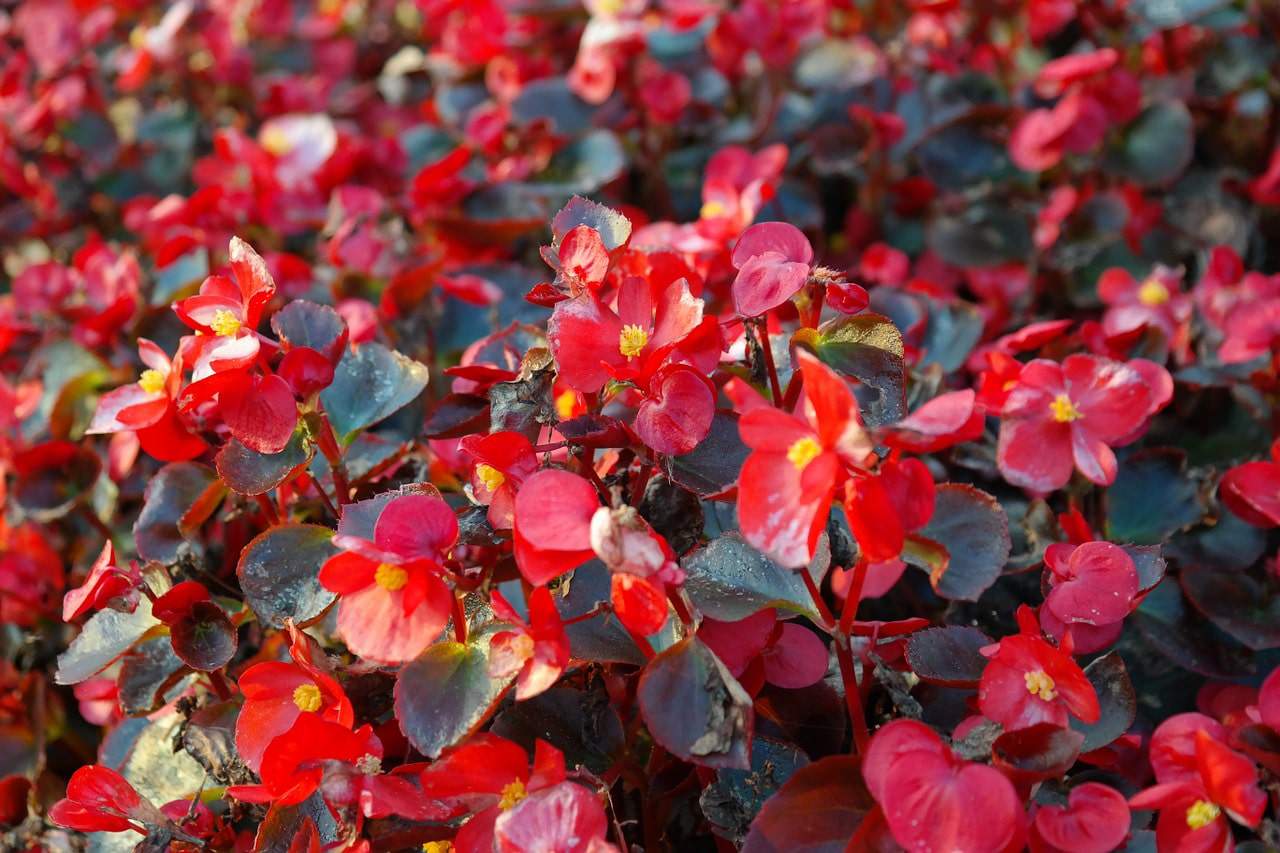
Begonias have a flower that prints so much beauty and good contrast with its mother plant, it is a real joy.
In this case, the begonias have the peculiarity of reproducing abundantly, which makes it possible to cover all the foliage.
Due to the simplicity and elegance of its flowers, it is one of the most used spring flowers in terms of garden decoration.
lilies

For those who love large flowers and who are capable of giving off a good smell, lilies will surely be among their favorites.
In spring they reach their maximum splendor by opening their large petals and giving off an impressive color depending on the type in question.
Bird from paradise
For those looking for an exotic flower among spring flowers, the Bird of Paradise flower is the ideal alternative.
Its structure, similar to this bird, makes it look imposing and unique, and with the mixture of colors it obtains, there is no doubt that it is quite pleasing to the eye.
And it is ideal for this season because it needs a cool climate but, in turn, abundant sunlight.
Dragon mouth

Snapdragon flowers have a structure that becomes quite imposing at an ornamental level as they cascade down.
As there is a wide variety of colors in pastel versions, these flowers are very useful for gardening compositions.
tulips
Tulips are beautiful looking flowers, elegant and very typical of spring.
They can be presented in different colors and that makes them much more striking since, in general, at least 150 species can be counted.
Good news for those who love tulips is that they are a very hardy type of spring flower.
Abelia Floribunda

Plants in the genus Abelia can be deciduous shrubs, evergreens, or small trees, with dark green leaves and funnel- or trumpet-shaped flowers in summer and fall. They are extremely attractive to bees.
Abelia floribunda is a semi-evergreen or evergreen shrub with glossy dark leaves and contrasting clusters of bright pink, tubular flowers.
It is hardy to -10°C and can therefore withstand winters in coastal and more temperate regions of Britain, but may need protection in severe winters, or if grown further inland or in the North.
For best results, it should be planted in well-drained soil and in a sheltered location. Abelia floribunda is well suited to being grown in a large container, which can be moved indoors in the fall.
bleeding heart (Dicentra spectabilis)
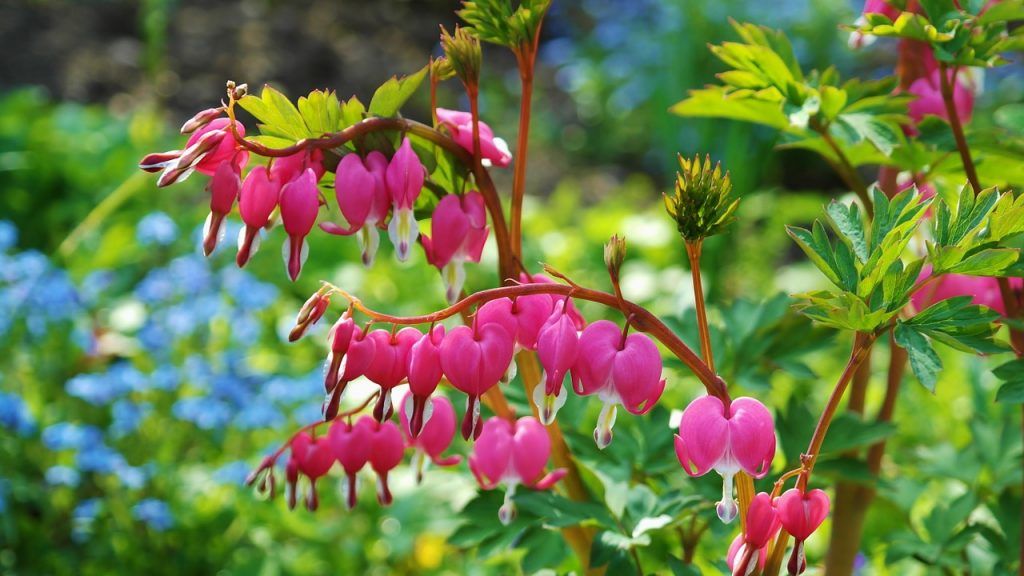
Despite the name, these flowers are wonderful and can be an excellent alternative to decorate your garden.
Even the plump, lobed leaves are attractive. Although bleeding hearts are a welcome sight in spring, you had better search quickly.
As the days lengthen and the temperature warms, the bleeding heart begins to turn yellow and forlorn. The plants may even die out entirely for the summer, as many spring mayflies do.
But don’t let that stop you from planting them in your garden. Simply plant them near plants that come up later and fill the void.
- Color varieties: Pink, red, white.
- Sun exposure: Half shade.
- Soil Needs: Moist, rich, well-drained.
Blood root (Sanguinaria canadensis)
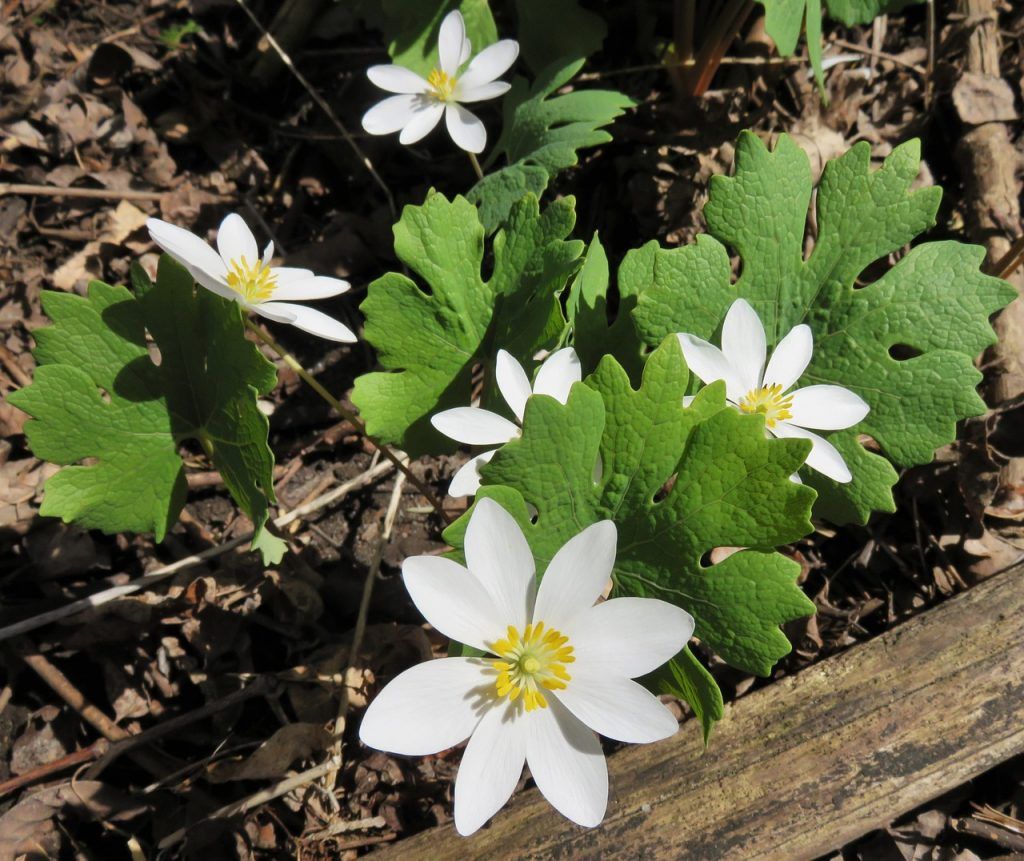
Bloodroot is more of a groundcover than a bedding plant, and its small white flowers can greatly enhance a shady or wooded garden.
Once the flowers are gone, the bluish-green leaves make an attractive backdrop for the summer blooms and even form a pretty carpet on their own.
Unlike many ground plants, bloodroot is not invasive and usually not even aggressive.
Its care needs are minimal, but it should be planted away from children or pets, as it is highly toxic when ingested.
- Color varieties: White or pale pink petals with yellow centers.
- Sun Exposure: Full sun to partial shade.
- Soil Needs: Rich, well-drained, acidic.
Siberian flower (Brunnera macrophylla)
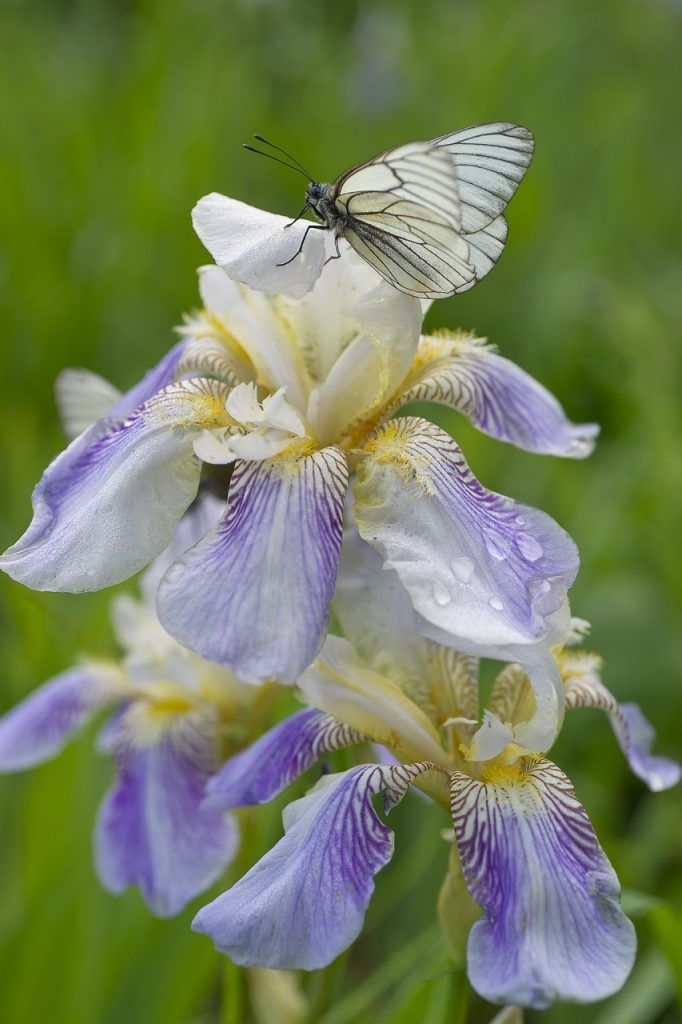
The heart-shaped leaves of false forget-me-nots (also called Siberian buglosses) often attract more attention than their bright blue flowers.
If you plant it for both its flowers and foliage, it is easy to care for. Because this plant blooms so early in the spring, the leaves may be a little worn in the summer.
Just cut them back and the new leaves will fill out.
It is a slow growing plant, but over time it will form a good sized bush.
- Color varieties: Blue.
- Sun exposure: Half shade.
- Soil Needs: Rich, moist, well-drained.
Hellebores (Helleborus spp.)
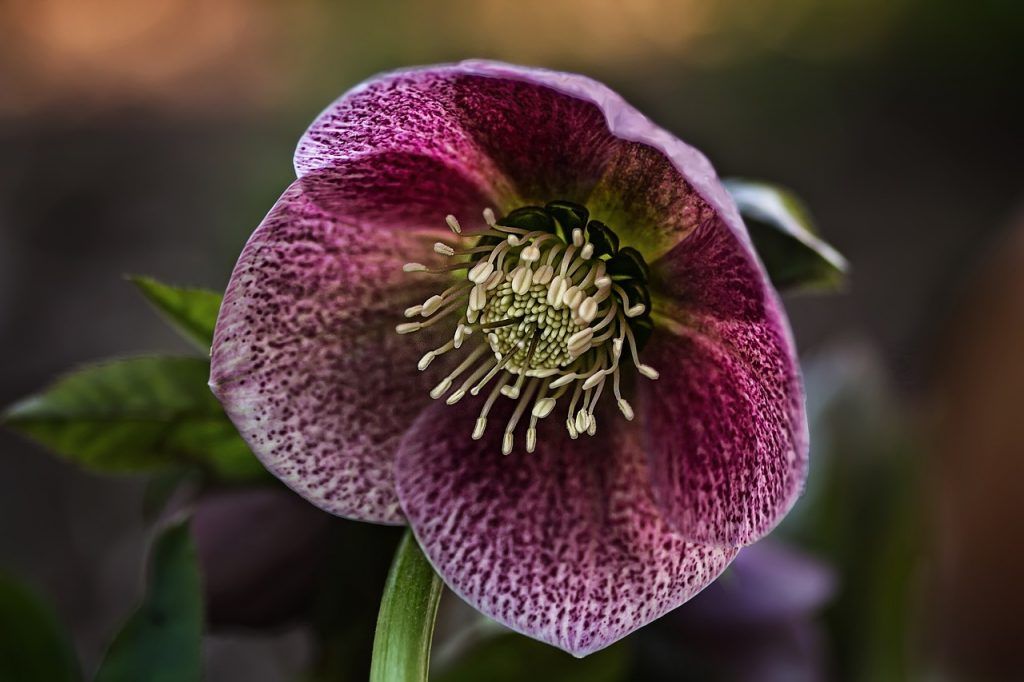
The flowers of the hardy genus Helleborus bloom as early as possible in spring.
They are slow-growing perennials that can be very expensive.
If you’re not particularly interested in color, you can find seed packets with mixes.
You’ll have to wait a few years for seed-grown hellebore to flower, but once they’re established, they’ll be around for decades. You just have to make sure that you plant them in a place protected from strong winds.
- Color varieties: Pink, purple, white, yellow.
- Sun Exposure: Partial shade to full shade.
- Soil Needs: Rich, moist, well-drained.
Lungwort (Pulmonaria spp.)
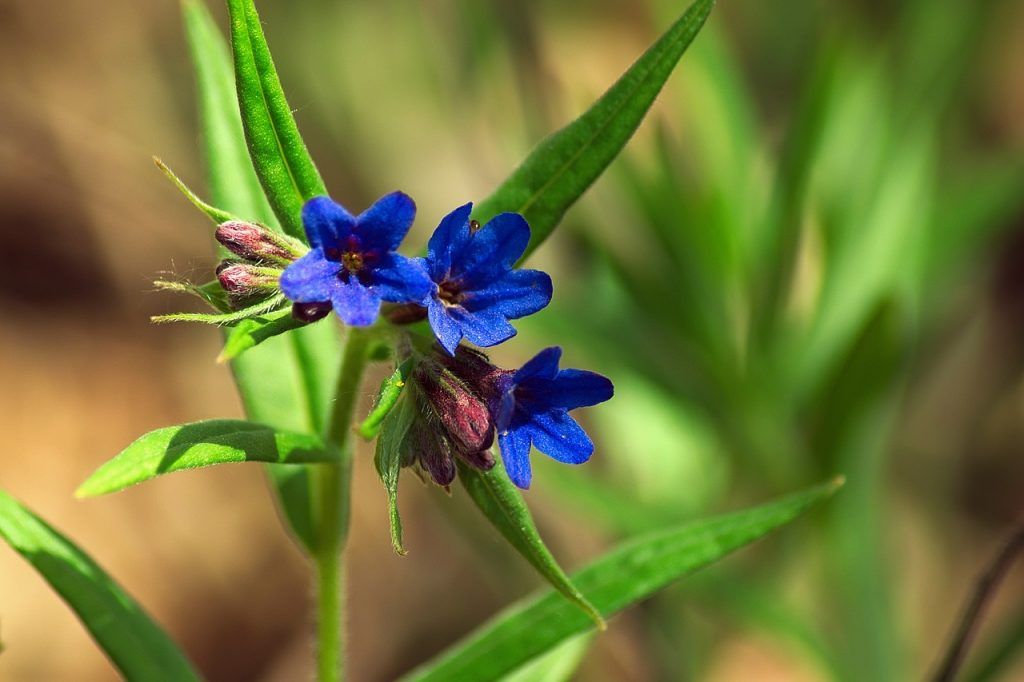
Lungwort may not have the prettiest name, but it is a fabulous early spring flower.
It also gets a lot of attention for its striking foliage, with flecked, speckled, and flecked leaves of white and silver. The only bad news is that the plants tend to be short-lived and fade in summer.
White flowers remain light white while blooming. Also, there are flowers that start out pink and turn blue after being pollinated.
The care is minimal, although it is essential to maintain a uniform humidity in the soil.
- Color Varieties: White, Pink, Blue.
- Sun Exposure: Partial shade to full shade.
- Soil Needs: Rich, well drained.
Cowslip (Primula spp.)
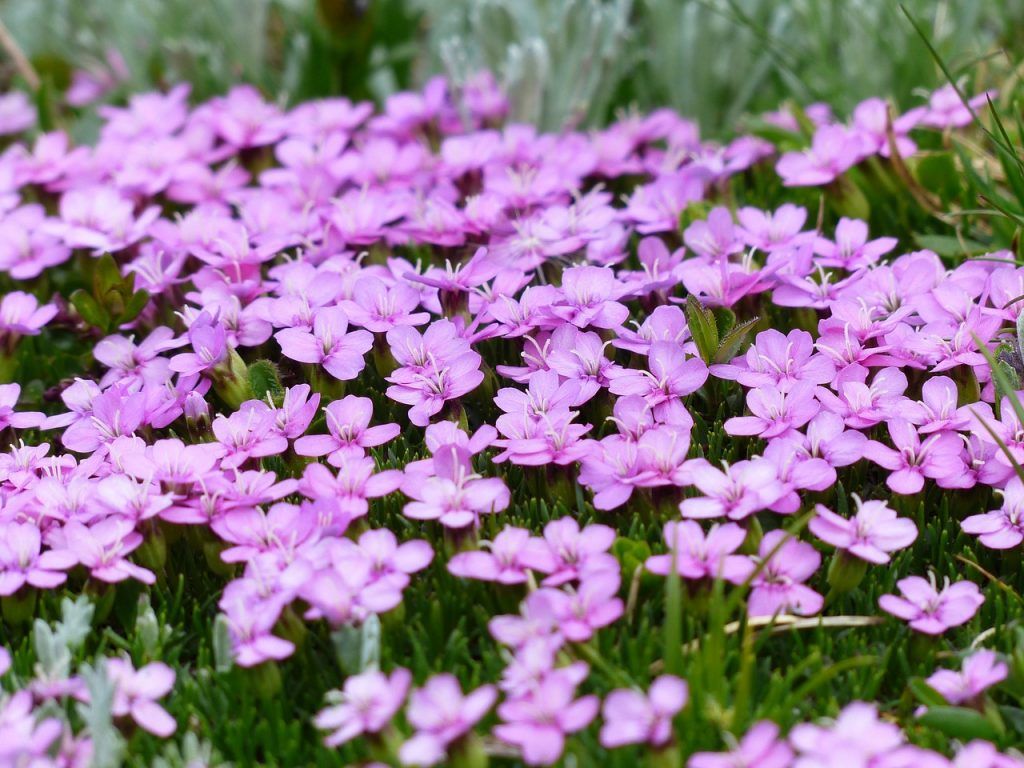
There are many varieties in the genus Primula.
There are common primroses (Primula vulgaris); cow primroses (Primula veris) buttery yellow; exotic candelabra (Primula japonica) that support their flower clusters on tall, straight stems; and English primroses (Primula acaulis) with their saturated colors.
They vary in shape and size, but all are best seen in large groups, especially when spread out under trees.
Care is minimal, apart from dividing the clumps when they get too big.
- Color varieties: White, amber – orange, blue, pink-purple, purple, red, several bicolor varieties.
- Sun Exposure: Full sun to partial shade.
- Soil Needs: Rich, moist, well-drained, slightly acidic.
Solomon’s seal (Polygonatum spp.)
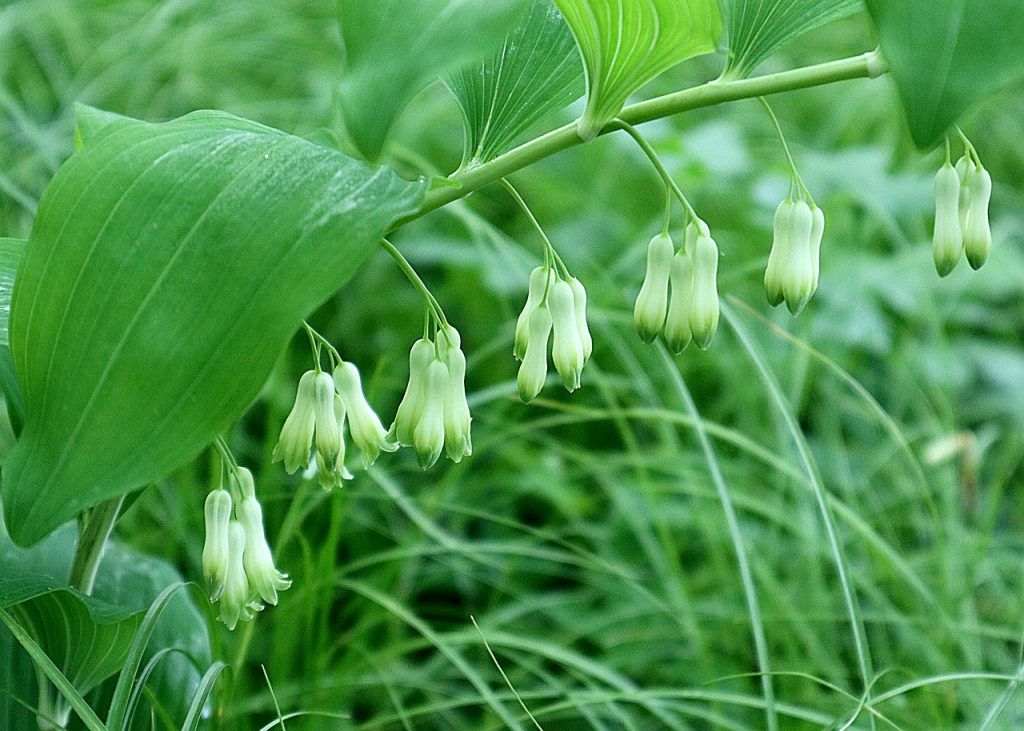
Solomon’s seal is an eye-catcher in a shady garden, with its arching stems and pendulous flowers.
And after flowering, the shiny black seed pods add visual appeal.
As it is a short plant that flowers downwards, Solomon’s seal looks best in large swaths that can be spread out naturally in a garden bed.
Make sure the soil stays evenly moist but not soggy for healthy plants.
- Color varieties: White, pink, green.
- Sun Exposure: Partial shade to full shade.
- Soil Needs: Rich, moist, neutral to slightly acidic.
spring flower care
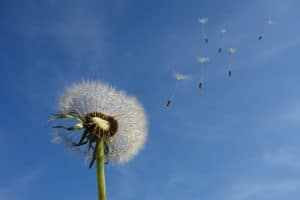 The care of spring flowers should be oriented to the type of flower that is specifically treated, since not all are handled the same.
The care of spring flowers should be oriented to the type of flower that is specifically treated, since not all are handled the same.
But in general terms we can say that spring is an ideal time to carry out fertilizations, since the plants begin their greatest work process.
At this time it is essential to offer a good irrigation system, according to the humidity requirements of the plant and if it is subjected to direct sunlight.
As for pruning, it is uncommon to recommend that it be done during the exact spring period because it will not allow proper recovery.
It is rather usual for this type of plants to be pruned towards the end of summer and the beginning of autumn.
Characteristics of this type of flowers
Among the main characteristics of spring flowers, the following can be mentioned:
- Variety of colors: spring is full of all the colors that we could think of thanks to the flowers that bloom during this season. In fact, the same type of flower is capable of generating a great variety of species of different colors.
- Number of flowers it generates: spring flowers are capable of reproducing in large numbers because this season brings together the conditions that are most pleasant for them. Hence, it is common to see bushes or plants in general full of their characteristic flowers.
- Planting time: a good amount of plants are planted during the spring and it is logical that those that produce flowers also. This is because it is the time that offers the best environmental conditions. That means that if you sow them, you must wait until the following year to notice their flowers.
- Lifetime: Most flowers are born and invigorate during mid-spring and stay that way until late summer and early fall. This results in a good time of year with a beautiful and colorful garden.
- More numerous: although it is a fact that there are summer, autumn and winter flowers, spring flowers are the most numerous family that exists in this classification.
What meaning do spring flowers have?
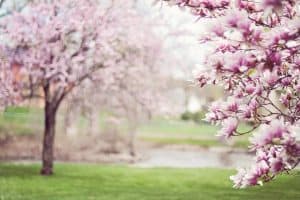 Spring flowers signify the beginning of the two best seasons of the year: spring and summer.
Spring flowers signify the beginning of the two best seasons of the year: spring and summer.
They manage to transmit joy, hope, a new rebirth and that is always positive.
Also, they are very colorful. Each type of flower can have a good variety of species that vary in shades, which allows you to enjoy much more.
Spring flowers are also attributed with the meaning that despite any dark weather, light always comes.
Spring flowers are beautiful, they can be found in all shapes and colors and that allows incredible creations to be made in the garden.
What is your favorite spring flower?
- Poppy: [Characteristics, Cultivation, Irrigation and Care]
- Afelandra or Zebra Plant: [Care, Planting, Irrigation and Substrate]
- Agapanthus: [Cultivation, Care, Irrigation, Substrate, Pests and Diseases]
- Bear Garlic: [Cultivation, Care, Irrigation, Substrate and Characteristics]
- Aquilegia Vulgaris: [Planting, Care, Irrigation, Substrate, Problems]
- Aster: [Cultivation, Irrigation, Care, Pests and Diseases]
- Azaleas: [Planting, Care, Irrigation, Substrate and Diseases]
- Begonia Elatior: [Characteristics, Cultivation, Care, Pests and Diseases]
- Calibrachoa: [Planting, Care, Irrigation, Substrate and Pests]
- Cayenne: [Cultivation, Irrigation, Associations, Pests and Diseases]
- Chinese Carnation: [Cultivation, Care, Pests and Diseases]
- How to Grow and Care for Your Phalaenopsis Orchid: [Complete Guide]
- How to Plant Saffron in a simple and effective way
- How to Plant Lilies in Your Garden or Orchard: [Complete Guide]
- How to Plant Nasturtium in your Garden: [Complete Guide and Steps to Follow]
- How to Plant Passion Flower in Your Garden: [Complete Guide]
- How to Plant Hibiscus in your Garden: [Complete Guide]
- How to Plant Water Lilies: Important Points + Pictures + [9 Steps]
- How to Plant Roses in your Garden: [Complete Guide + Step by Step]
- How to Plant Tulips and Have a Spectacular Garden: [12 Steps + Images]
- How, When and Where to Plant Hydrangeas: [Guide for your Garden]
- Chrysanthemums in your Garden: [Planting, Care, Irrigation, Substrate]
- Crocus: [Planting, Care, Irrigation, Substrate and Pests and Diseases]
- Cultivate Amarliys: [Care, Planting, Irrigation and Substrate]
- Grow Tradescantia (Brazilian Trunk) in your Garden: [Irrigation, Care, Pruning and Substrate]
- Honeysuckle Cultivation: [Cultivation, Irrigation, Care, Pests and Diseases]
- Dandelion: [Care, Planting, Characteristics, Irrigation and Substrate]
- Jericho Flower: [Cultivation, Care, Pests and Diseases]
- Electric Flower: [Cultivation, Care, Irrigation, Substrate and Pests]
- Yellow Flowers: [Species, Care, Characteristics and Meaning]
- Blue Flowers: [10 Examples, Care, Characteristics]
- White Flowers: [Complete List of 16 Plants + Images]
- Bach Flowers: [Examples, Care, Characteristics and Meaning]
- Autumn Flowers: [Names, List, Care and Characteristics]
- Summer Flowers: [Names, List, Characteristics and Care]
- Hybrid Flowers: [List, Examples, Characteristics and Care]
- Striking Flowers: [List, Examples, Characteristics and Care]
- Purple Flowers: [List, Examples, Characteristics and Care]
- Orange Flowers: [Examples, Care, Characteristics and Meaning]
- black flowers
- Climbing Flowers: [List, Examples, Characteristics]
- Tropical Flowers: [Types, Characteristics and Care]
- Violet Flowers: [Examples, Care, Characteristics and Meaning]
- Forsythia: [Planting, Care, Irrigation, Substrate, Pests and Diseases]
- Freesia: [Planting, Care, Irrigation, Substrate, Flowering and More]
- Galan de Noche: [Planting, Care, Irrigation, Pests and Diseases]
- Complete Guide to Plant Clematis in your Garden
- Complete Guide to Plant Dracaena Marginata: How, When and Where to do it?
- Complete Guide on How to Plant Carnations [Step by Step + Images]
- Complete Guide on How to Plant Red Salvia: [Images + Step by Step]
- Complete Guide on How to Grow Vanilla: [Steps + Images]
- Iris Germanica: [Planting, Care, Irrigation, Substrate and Pests]
- The Agrimony: [Planting, Care, Irrigation, Substrate and Pests]
- The Berberis: [Care, Planting, Irrigation, Substrate and Pests]
- The Gerbera: [Care, Planting, Irrigation, Light and Substrate]
- Lantana: [Cultivation, Care, Irrigation, Substrate, Pests and Diseases]
- The 20 Most Common and Beautiful Edible Flowers: [Complete Guide]
- The 26 Most Common Wild Flowers, Beautiful and Easy to Grow
- Peace Lilies: [Care, Sowing, Irrigation and Substrate]
- The 45 Types of Pretty Flowers for Your Garden
- Daisies: [Planting, Place, Care, Irrigation, Substrate]
- Queen’s Earrings: [Care, Planting, Irrigation, Substrate and Pests]
- Plant Snapdragon in your Garden: [Guide + Steps to Follow]
- Platycodon: [Care, Planting, Irrigation, Substrate and Pests]
- Plant Anthurium: [Care, Planting, Irrigation and Substrates]
- Plant Azaleas in Your Garden: [Complete Guide and Answers]
- Plant Begonias in Your Garden: [Step by Step + Care]
- Plant Bromeliads: [Care, Plantation, Place and Substrate]
- Plant Bougainvillea or Bugambilia in your Garden: [Complete Guide]
- Planting Carnations: [Needs, Substrate, Irrigation and Cultivation]
- Plant Cola de Burro in your Garden: [Irrigation, Care, Light and Substrate]
- Plant Oca or Oxalis Flowers: [Needs, Substrate, Irrigation and Cultivation]
- Plant Gardenias: [Care, Planting, Irrigation, Substrate]
- Plant Geraniums: Complete Step-by-Step Guide for your Garden [+Images]
- Plant Sunflowers: [Cultivation, Care, Irrigation, Substrate, Pests]
- Planting Kalanchoe in your Garden: All the Answers
- Plant The Poinsettia in Your Garden: [Complete Step-by-Step Guide]
- Plant Orchids in Your Garden: [8 Steps + Images]
- Planting Petunias in Your Garden: [Guide, Care + Images]
- Sowing African Violet: [Needs, Substrate, Irrigation and Cultivation]
- Viburnum Opulus: [Planting, Care, Irrigation, Substrate and Pests]

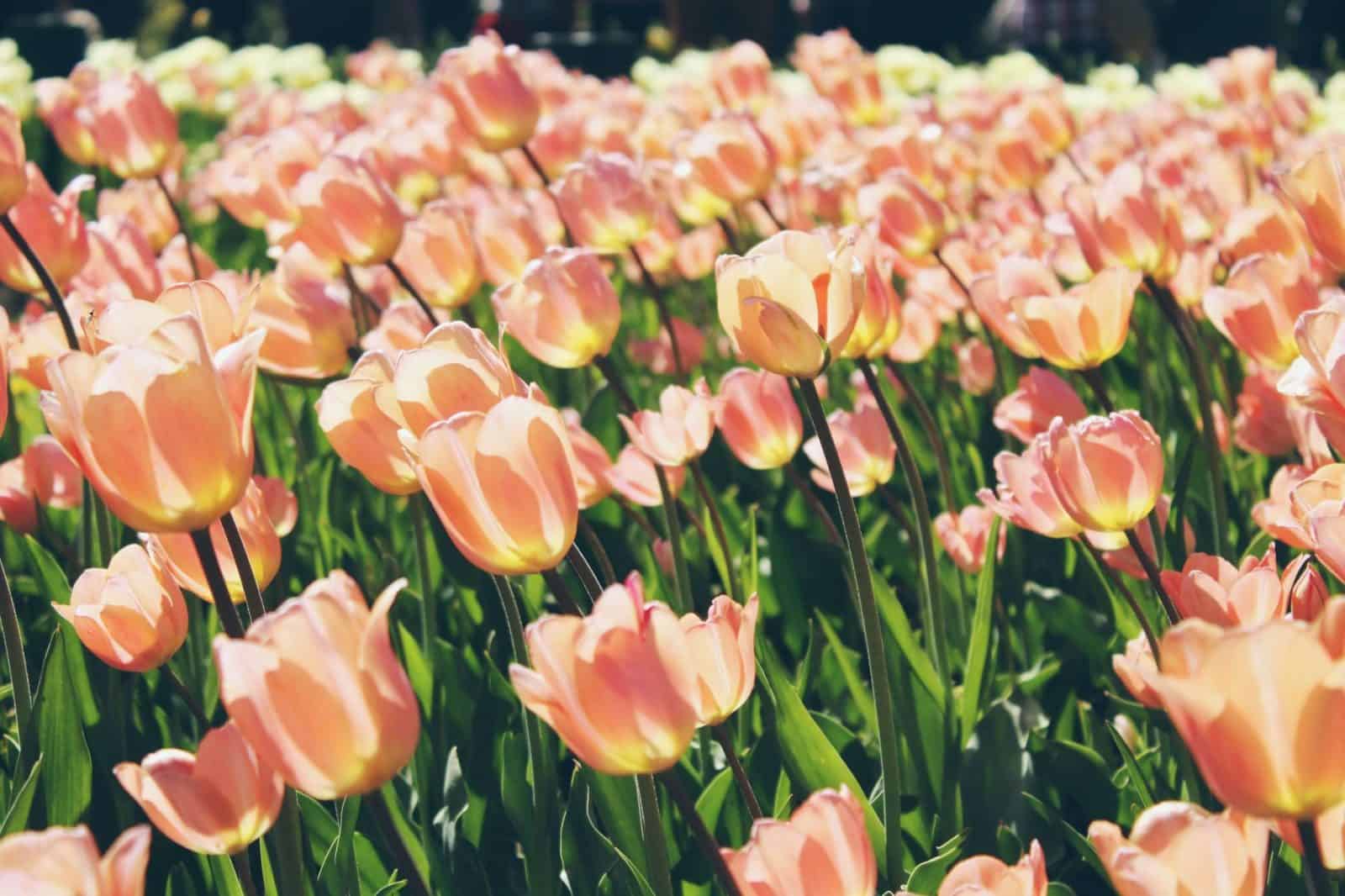
![Photo of Complete Guide on How to Plant Chickpeas: [Images + Step by Step]](https://www.complete-gardening.com/wp-content/uploads/2022/08/complete-guide-on-how-to-plant-chickpeas-images-step-by-step-390x220.jpg)
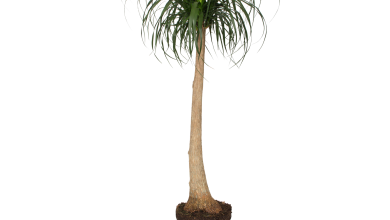
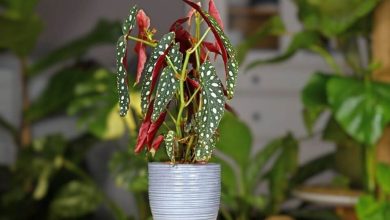
![Photo of Onion Fly (Chortophila antiqua): [Characteristics, Detection, Effects and Treatment]](https://www.complete-gardening.com/wp-content/uploads/2022/08/onion-fly-chortophila-antiqua-characteristics-detection-effects-and-treatment.jpg)